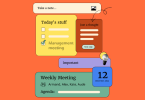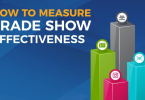Finding the best mortgage rate is a crucial step in the home-buying process, potentially saving you thousands of dollars over the life of your loan. However, navigating the myriad of options and understanding the factors influencing mortgage rates can be daunting. This article aims to demystify the process and provide actionable insights to secure the best mortgage rate for your situation.
Understanding Mortgage Rates
A mortgage rate is the interest rate charged on a mortgage loan. These rates can be either fixed, remaining the same throughout the loan term, or adjustable, changing periodically based on an index or margin. Mortgage rates are influenced by a variety of factors, including:
- Economic Indicators: Inflation, employment rates, and economic growth can impact mortgage rates. Generally, a strong economy leads to higher rates.
- Federal Reserve Policy: The Federal Reserve’s policies on interest rates significantly affect mortgage rates. When the Fed raises rates, mortgage rates typically increase as well.
- Credit Score: Lenders assess your creditworthiness through your credit score. Higher scores usually translate to lower mortgage rates.
- Loan Type and Term: Different types of loans (e.g., conventional, FHA, VA) and their terms (e.g., 15-year, 30-year) come with varying rates.
- Down Payment: A larger down payment can reduce your mortgage rate because it lowers the lender’s risk.
Tips to Secure the Best Mortgage Rate
- Improve Your Credit Score:
- Check Your Credit Report: Ensure there are no errors on your credit report and dispute any inaccuracies.
- Pay Down Debt: Reduce your overall debt to improve your debt-to-income ratio.
- Avoid New Credit: Refrain from opening new credit accounts or making large purchases on credit before applying for a mortgage.
- Compare Lenders:
- Shop Around: Get quotes from multiple lenders, including banks, credit unions, and online lenders.
- Consider Loan Estimates: Review the Loan Estimate forms from different lenders to compare interest rates, closing costs, and other fees.
- Choose the Right Loan Type:
- Fixed vs. Adjustable Rates: Decide whether a fixed-rate or adjustable-rate mortgage is better for your financial situation.
- Loan Programs: Explore various loan programs, such as FHA, VA, or USDA loans, which might offer better rates or terms.
- Increase Your Down Payment:
- A larger down payment reduces the loan amount and can secure a lower interest rate. Aim for at least 20% down to avoid private mortgage insurance (PMI).
- Lock in Your Rate:
- Rate Lock: Once you find a favorable rate, ask your lender to lock it in. This guarantees the rate for a specific period, protecting you from potential rate increases.
- Consider Discount Points:
- Buy Points: Paying for discount points upfront can lower your mortgage rate. One point typically costs 1% of the loan amount and can reduce the rate by 0.25%.
Current Trends in Mortgage Rates
As of mid-2024, mortgage rates have shown variability due to economic conditions and Federal Reserve policies. Rates for 30-year fixed mortgages have fluctuated between 5% and 6%, while 15-year fixed mortgages have ranged from 4.5% to 5.5%. Adjustable-rate mortgages (ARMs) have seen initial rates around 4%, but these can change based on market conditions.
Conclusion
Securing the best mortgage rate requires preparation, research, and strategic financial decisions. By improving your credit score, comparing lenders, choosing the right loan type, increasing your down payment, locking in your rate, and considering discount points, you can significantly enhance your chances of obtaining a favorable mortgage rate. Stay informed about current market trends and economic factors that influence mortgage rates to make the best decision for your home financing needs.
By taking these steps, you’ll be well on your way to securing a mortgage that fits your financial goals and helps you achieve your dream of homeownership.






Leave a Comment